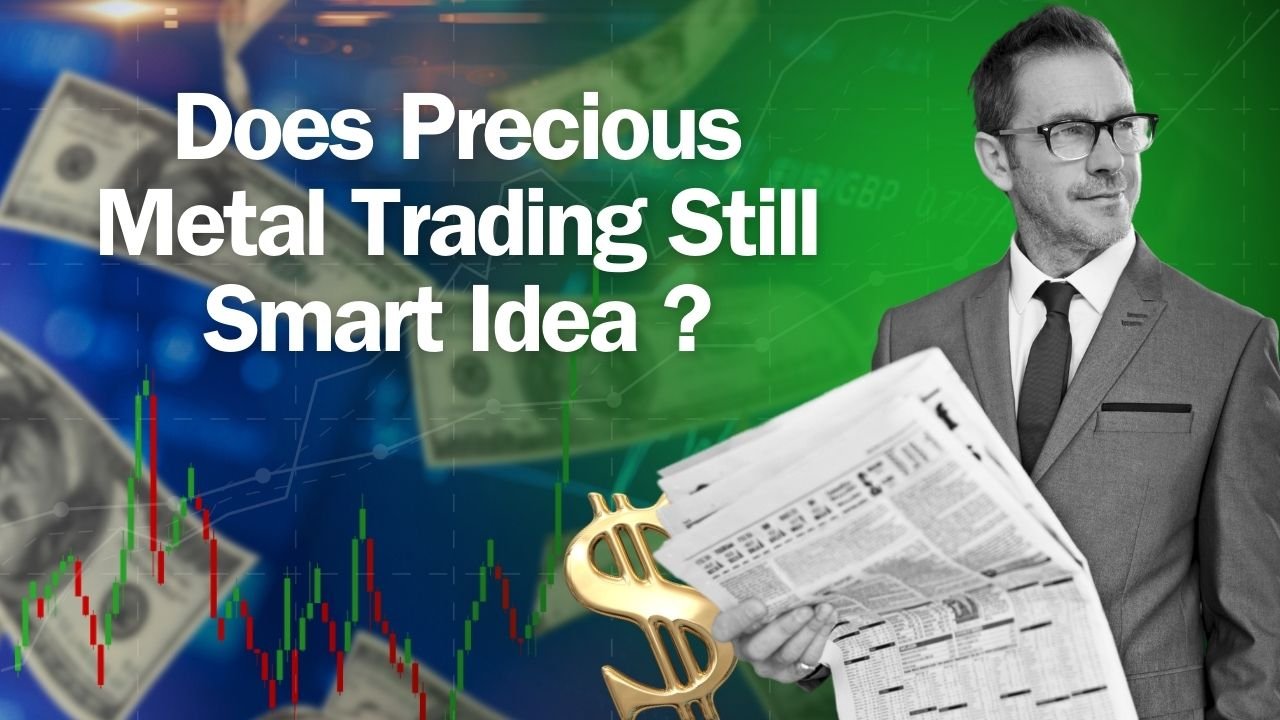Blog
Does Precious Metal Trading Still Smart Idea
Precious metals, such as gold, silver, platinum, and palladium, have been exchanged for ages as both commodities and safe haven investments during times of economic turmoil. Despite the rise of contemporary financial tools like cryptocurrencies, stock derivatives, and digital assets, precious metal trading remains a popular choice for both investors and traders. The issue is: Is precious metal trading still a good idea in today’s global financial environment? The response, supported by numerous critical considerations, is a cautious but confident yes—when addressed correctly. Does Precious Metal Trading Still Smart Idea
Download Now Non-Repaint Indicator
Telegram Channel Visit Now
Fund Management Services Visit Now
1: Historical Reliability as a Store of Value – Does Precious Metal Trading Still Smart Idea
One of the most compelling reasons for trading precious metals is their historical significance as a store of value. Unlike fiat currencies, which are prone to inflation and governmental control, precious metals have inherent worth and a finite supply.
Gold has endured several currency changes and economic downturns. During global catastrophes, such as the 2008 financial crash or the COVID-19 pandemic, gold and silver prices rose as investors evacuated riskier assets.
Because of this long-term faith in precious metals, they serve as both a trading instrument and a wealth preservation tool.
2. Inflation Hedge
Precious metals are a good hedge against increasing inflation, particularly in industrialized nations. As inflation reduces the purchase power of paper currency, the value of actual assets such as gold and silver increases.
Investors often invest a percentage of their portfolio to precious metals in order to offset the inflationary risk of cash and bonds. Trading these assets during inflationary periods may give both safety and profit possibilities.
3. Portfolio Diversification
Precious metals do not often move in tandem with equities or bonds, making them ideal for portfolio diversification. When stock markets are turbulent or uncertain, precious metals often exhibit inverse or uncorrelated moves.
Diversifying into gold or silver via trading or ETFs may lower overall portfolio risk while smoothing returns over time. For traders, this opens up potential to benefit in situations when conventional assets may fall.
4. Strong liquidity and market access – Does Precious Metal Trading Still Smart Idea
The precious metals market is extremely liquid, with daily trade volumes totaling billions of dollars. Modern systems like as MetaTrader 5, TradingView, or commodity brokers make it simpler to access and trade metals such as gold (XAU/USD) and silver (XAG/USD).
You may exchange metals through:
- Includes spot trading, futures and options, ETFs, mutual funds, and CFDs (Contracts for Difference).
This diverse range of products appeals to both short-term traders and long-term investors, enhancing the market’s flexibility.
5. Geopolitical Tension and Economic Uncertainty
The globe is no stranger to political upheaval, conflicts, and economic insecurity. During times of uncertainty, demand for safe haven assets such as gold tends to rise.
For example:
- Gold prices increased during the Russia-Ukraine conflict. * Silver prices rose on concerns about global financial instability.
Trading precious metals in uncertain times may be profitable since prices respond significantly to global events.
6: Technological and Industrial Demand
Metals such as platinum and palladium are often employed in industrial applications, notably in the automotive and electronics sectors. Silver is also used in the manufacture of solar panels and electronics.
As the world moves toward greener technology and electric cars, demand for these metals is projected to remain high or increase. Traders may gain from long-term industry trends that push rising pricing.
7. Risk and Volatility – Does Precious Metal Trading Still Smart Idea
Despite the many advantages, precious metal trading is not without danger. Prices may be very volatile, influenced by speculation, interest rate movements, and global macroeconomic indicators.
For example:
- A strong US currency often results in a reduction in gold prices. Rising interest rates may make yield-bearing investments more appealing than gold, driving prices down.
When trading precious metals, it is critical to use risk management tools such as stop-loss orders, leverage with caution, and remain up to current on global market trends.
Download Now Non-Repaint Indicator
Telegram Channel Visit Now
Fund Management Services Visit Now
Conclusion: Still a Smart Idea—With Strategy.
So, is precious metal trading still a good idea? Yes, sure, but only with the proper approach. Precious metals remain excellent financial vehicles for diversification, inflation hedging, and geopolitical risk reduction. They are liquid, accessible, and provide a variety of trading and investment opportunities.
However, like with any asset, they are volatile and risky. Smart traders will consider both fundamental and technical variables, manage risk appropriately, and understand when market circumstances favor metal trading. For those who do, precious metals remain an effective and lucrative component of a contemporary trading strategy.
Read also this :
Most Traders Have These 4 Trading Personality
The Best Trading Films and TV Shows to Watch
Risk Rule to Win at Day Trading
Trade Forex with Signals – 2025 Full Guide
Does Precious Metal Trading Still Smart Idea
What is the Forex Swap and Types in MetaTrader 5 In forex
Trend Versus Range Trading In Forex
Factors That Affects The Gold Price in Market


